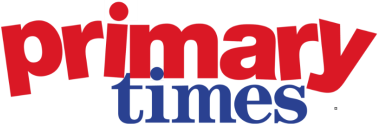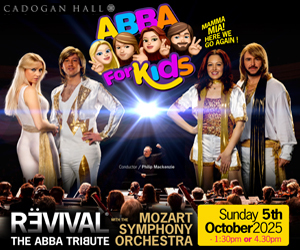Primary Times - the definitive what’s on and where to go family guide of activities and events for children of primary school age. Things to do with your kids during the school holidays including arts and craft activities, music and theatre for children, parties, competitions, days out, and family attractions along with term time drama schools, dance classes, after school clubs and sports activities. Things to do at a place near you!
Marketing tips | August
Tip 8 - Be creative
Stand out from your competitors with fresh and exciting creative. You need to cut through the noise and investing in strong creative will help you achieve this. Brilliant creative is usually the difference between a ‘meh’ campaign and a ‘wow’ campaign.
How to write a winning creative brief
The great advertising mogul David Ogilvy says it best ‘If it doesn’t sell, it isn’t creative.’ But what makes an effective advertising campaign?
In short, it’s an advert that works because it does what it set out to do. Whether that’s increase brand awareness, change customer’s perceptions or make people buy more.
So how do you create advertising that not only gets your audience to sit up and take notice - but gets them to act in the way you want? There’s no magic formula, but every great advert starts with a well-crafted creative brief. And this applies whether you’re working with a top creative agency, in-house designers or freelancers.
What needs to be in the brief?
You will have plenty of information about your brand, your customers, where you are now and where you want to be. But the person creating your advert won’t have this knowledge, so you need to share it in a concise and informative way. If you’re doing the design and creative yourself then you should still write a brief, it helps to keep you focused on what you want your advertising to achieve.
A good brief should include:
- Background
This section is where you include information about who you are, where you are now and where you want to be. If there are any specific triggers for running the campaign, then it’s useful to include them in this section.
- . Objectives
Be clear about what you want to achieve and make sure your goals are SMART, for example, ‘acquire 500 new customers by the end of 2020’.
It’s useful to separate this section into primary and secondary objective as your primary objective might be to generate responses, while your secondary objective might be to increase awareness of your brand. The objectives will drive the creative thinking about what the advert needs to say and how it should look.
- The target audience
Who are you talking to? What do you know about them? How are you targeting them? If you have any customer research, it would be helpful to include this with the brief. This section of the creative brief is vital as your advertising needs to resonate with your target audience, and the only way you can do this is by understanding your audience.
- Primary messaging
What message do you want to convey? It helps to break this section into the following sections:
What do we want our target audience to feel about our brand?
- If for example you run a nursery, then you might want parents to feel that their pre-school aged children will be safe, stimulated and cared for while their parents are at work. Your primary messaging would be around this.
Why should your audience believe this?
- Using the same example, you might use some evidence of the benefits your setting offers. For example, if you have an Ofsted Good or Outstanding rating, or some customer reviews, then you might include these in the advertising campaign.
- What do you want your audience to do?
You must define your ‘call to action’. How do you want your audience to contact you? Is it a phone call, a campaign landing page or to visit you?
If you’re using a specific call to action, have you put steps in place so you can measure the success of your campaign? For example, a unique phone number or landing page? If it’s an offer, have you tested it with a sample of your customer base to ensure it will appeal?
Once you’re clear on what you want your audience to do, you need to document this clearly as this will drive the copy in the advert.
- Brand and Tone of Voice
Your brand is much more than a logo and a palette of colours. It’s what you say to your audience and how you say it.
Think about how you speak to your customers. This is called the ‘tone of voice’ and it’s important to get it right. For example, the humorous and slightly irreverent style of Innocent drinks wouldn’t work for a more serious product such as critical illness protection or life insurance.
Your tone of voice will be unique to your brand. If you have any brand or tone of voice guidelines, you should include them with your brief.
- Competitors
It’s helpful to include a list of your closest competitors. Include some brief information on how they position and promote themselves. Think about what kind of customers use your competitors, how does this differ to yours? This information will help ensure your marketing stands out from your competitors.
- Any mandatories
You need to include information about anything that must appear in your advertising. For example, if you are a regulated business, you may need to include specific wording that your regulatory body requires. You would also include any details around creative mandatories, for example, guidelines on logo usage, fonts and colours.
- Media and output
What channels are you using? This might look something like:
- Inside front page in Primary Times Autumn, Spring and Summer issues
- Direct mail and email to existing database
- Social Media – Facebook boosted posts and Twitter cards
- Bespoke landing page
By defining the channels you are using, you can ensure the call to action and outputs are appropriate. For example, a Facebook call to action will be different to print. It might be about ‘tag a friend’ rather than ‘visit us’.
You can also detail how you need the artwork to be issued, for example, hi-resolution PDF direct to the publisher or artwork in the correct sizes for social media.
- Practicalities
Budget – outline your budget, split this out between creative and media, you need to have enough budget to cover all aspects of the campaign.
Timings – what are your deadlines? When do you expect a first draft to review?
Key contacts – include the key contacts involved and their contact details.
Focus on your customer
It’s worth remembering that as well as a strong creative brief, you need to look outside of your organisation and look at customer behaviour. For example, Nike overtook the Reebok brand by tapping into the fitness craze in the 1990s. They repositioned themselves from a specialist marathon provider to an all-sports provider. Their inspirational ‘Just do it’ brand positioning moved them from a $800m company to a $9.2bn company by the late 90s.
This is a great example of brilliant creative married with capitalising on a market opportunity. And the ‘Just do it’ brand strapline has proven a long-term success for the brand. A clear creative brief combined will lift your marketing from good to great.



